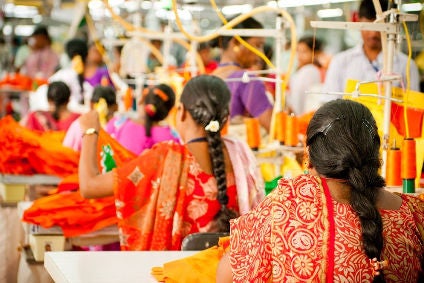
Garment industry workers who are paid a partial piece rate are more likely to report reduced emotional and physical health than those paid by the hour, according to new research.
The discussion paper on ‘Piece rate pay and working conditions in the export garment sector,’ used data from around 6,000 workers employed in garment factories in Vietnam, Indonesia, Jordan, Haiti and Nicaragua.
The factories are all registered with Better Work, a flagship programme of the International Labour Organization (ILO) jointly managed by the International Finance Corporation, which improves working conditions and competitiveness in the global garment industry.
The research found that workers whose pay is jointly determined by hourly pay and a piece rate (described as partial piece rate pay) are more likely to be concerned with sexual harassment and verbal abuse and more worried about workplace accidents and injuries.
Typically in these systems, workers receive the hourly base salary, which is often very low, and the incentive pay, based on the output, is obtained only if a certain output threshold is reached.
According to the paper, workers whose pay is fully determined by a piece rate are not negatively impacted, suggesting that uncertainty or unpredictability in how payments are determined may be the driving factor of these detrimental effects.

US Tariffs are shifting - will you react or anticipate?
Don’t let policy changes catch you off guard. Stay proactive with real-time data and expert analysis.
By GlobalData“Workers who are on a combination of pay types are concerned by the variability of their wages and a lack of transparency in how their wages are put together,” says lead author Floriana Borino. “These concerns can lead partial piece rate employees to work much harder, sometimes making their employment more strenuous and impacting their emotional and physical health,” she adds.
The analysis also showed that workers in partial piece rate systems reported being less comfortable seeking help from supervisors and less likely to be treated with respect and fairness from their supervisor. Partial piece rates workers in Vietnam were also more likely to report overall lower life satisfaction.
While piece rate work was shown to correlate with higher hourly wages in Vietnam, Indonesia and Jordan, the paper cautions that Better Work-registered factories are not always representative of a country’s working conditions and that other subcontracting factories may not operate with the same standards.
In addition, the Better Work results on wages stand in contrast to analysis the author conducts of other labour force surveys and research in garment and similar sectors, where many piece rate workers are founds to earn less and work more than their hourly paid counterparts. In Haiti (where 83% of workers are on piece rate or partial piece rate pay) and Nicaragua, piece rate work was not associated with higher wages for garment workers.
The authors conclude that the extent to which piece rate can be of benefit for both employers and workers depends on how it is designed and regularly maintained afterwards.
To be fair and effective, piece rate systems should be simple and transparent, rewarding employees according to the difficulty and quality of their work, and ensuring that motivated workers can earn substantially more than the minimum wage.
Involving employees before implementing a piece-rate pay system will increase transparency and confidence, so a crucial role should be played by trade unions. To tackle the decent work deficits of piece rate workers and improve their work conditions, it is crucial for government to regulate piece rates and piece rate work and for enterprises to implement sound piece rate systems.
“Piece rate can be a win-win for both employers and workers, but it needs to be designed in a fair way that is consistent with decent work objectives,” comments Patrick Belser, senior economist with the ILO’s Inclusive Labour Markets, Labour Relations and Working Conditions Branch (INWORK).
“Involving workers and trade unions in the design of pay regimes will go a long way to offset some of the negative impacts of piece rate wage systems. There is also a role for governments to provide a robust legislative framework and to ensure that all workers, including those who are paid piece rates, earn at least the minimum wage.”
However, incentive systems like piece rate wages have been reported to negatively affect the health of workers, due to workers speeding up their production and/or extending their working hours. Research has also linked sexual harassment to the piece rate, suggesting that supervisors responsible for reporting output may extract some portion of the piece rate incentive from workers in the form of sexual favours.



